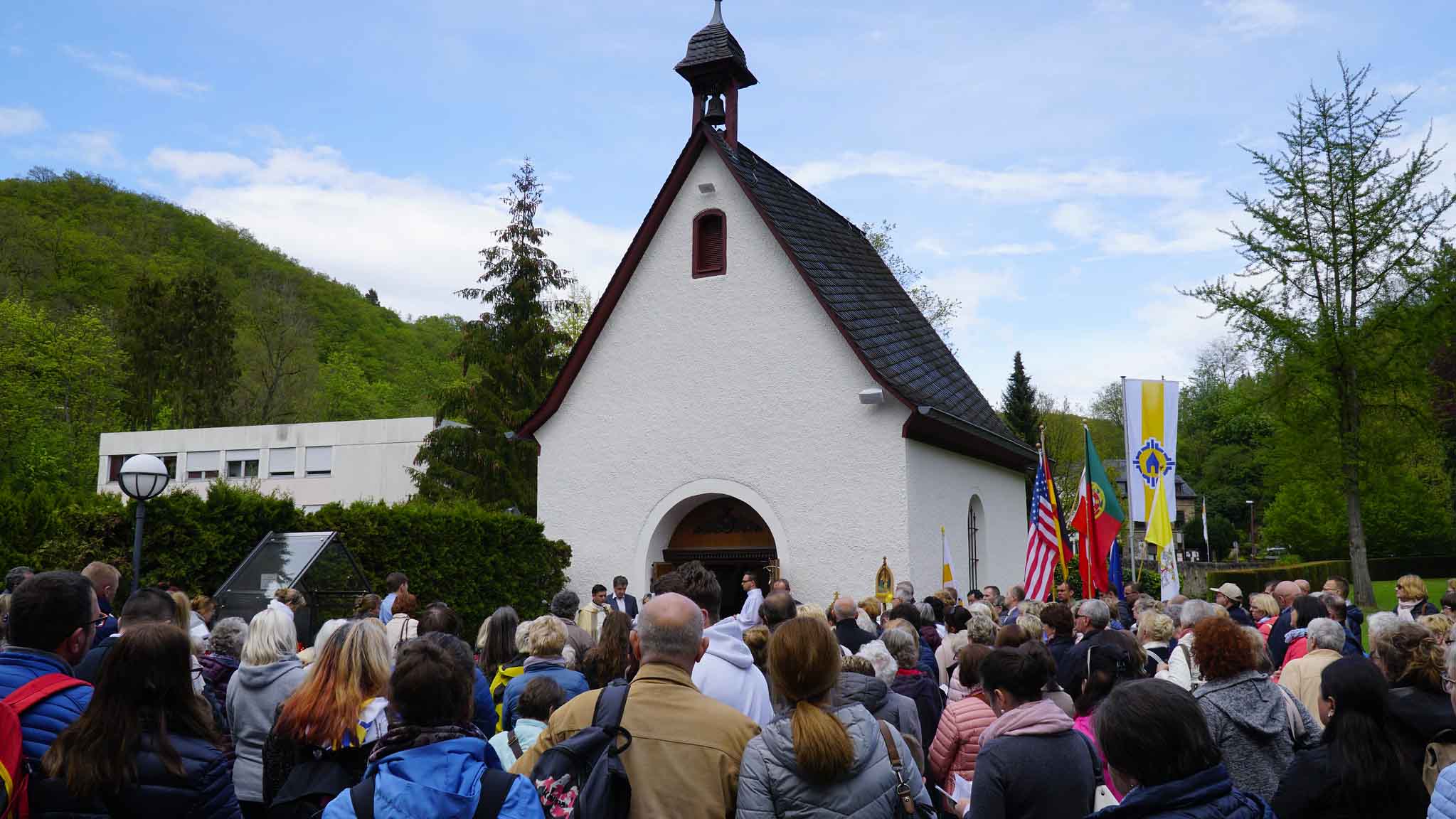Shrine
Schoenstatt was founded by invitation: The earthly partners offered their striving for sanctity, and the heavenly partner, Mary, was asked to come and actively dwell in the shrine as Mother and Educator.

God is everywhere
Although God is everywhere, He often chooses certain places to show His presence and action, primarily, often through Mary and the saints. Such places are called places of grace, pilgrimage places, or shrines.
A Genuine Place of Grace
God aims to establish a personal covenant relationship with each person. Observing how God works (such as in the Old Testament) makes it clear that he is not satisfied with calling us in a general way but calling us to commit through privileged times and places.
Although God is everywhere, He often chooses certain places to show His presence and action, primarily, often through Mary and the saints. Such places are called places of grace, pilgrimage places, or shrines.
Founded in an Act of Invitation
Since 1914, many have repeatedly observed that the shrine is truly a place of grace, especially regarding its three graces—the grace of a home, inner transformation, and apostolic fruitfulness.
Schoenstatt was founded by invitation: The earthly partners offered their striving for sanctity, and the heavenly partner, Mary, was asked to come and actively dwell in the shrine as Mother and Educator. This is precisely known as the covenant of love upon which Schoenstatt was founded. The life of the shrine depends entirely on this covenant. Schoenstatt’s unique Marian consecration is inseparable from the shrine and its graces. Every covenant of love with the MTA is therefore connected to the shrine, at least spiritually, and the shrine is, so to say, nourished by the covenant of love of all who are attached there.
It's good to be here.
Pilgrimage Graces
The three graces of pilgrimage are the most typical graces received by any pilgrim to the Schoenstatt Shrine.
Mary’s motherly presence is sensed as one who accepts each person just as they are.
She also encourages us to become disciples of Christ, interiorly transformed from within
It enables it to be an effective instrument of God, allowing it to attain a high degree of apostolic fruitfulness.
The grace of Home
The Grace of Inner Transformation
The Grace of Apostolic Fruitfulness
The first two pilgrimage graces culminate in the third: the grace of apostolic fruitfulness. When the soul is entirely at home and knows it is totally accepted and profoundly transformed—freed from the many things that make it fearful and hesitant to spread the Gospel—it can be more fully effective as an instrument of God, allowing it to attain a high degree of apostolic fruitfulness.

